Opening reception: September 18, 2013, 6:00 – 9:00 p.m.

Alberto Baraya
For more than a decade, Colombian artist Alberto Baraya has produced works of art, which question and parody the agendas and empirical objectivity of seventeenth, eighteenth, and nineteenth-century European expeditions that purported to scientifically collect and quantify the indigenous flora, fauna and peoples of the Americas. His exhibition presents his findings and projects based on travels to Acre, Bogotá, Gainesville, Indianapolis, Long Beach and Machu Picchu, and includes selected works from the series Herbarium of Artificial Plants, The Fable of the Birds, and Anthropometries.
In his Herbarium of Artificial Plants, Baraya uses found objects such as silk, plastic or glass flowers and leaves, to create beautiful taxonomies. Science and art are combined with drawings and annotations related to his research, as well as to the social and political implications of his findings. Perhaps the most ambitious project of the Herbarium series is the Latex Tree, originally produced for the 27th São Paulo Biennial. The outer layer of the latex tree was peeled off from the man-produced tree and exhibited during the Biennial. In addition to presenting a visually striking piece, the project provided a commentary on the exploitation of rubber in nineteenth-century Brazil. The Fable of the Birds features photographs of stuffed birds, typical of the Americas, leading the viewer to different ways of contemplating controlled landscapes: the landscape of dissected and stuffed birds as a scientific instrument and their relationship to the landscape of their natural habitat. Anthropometries focuses on anthropometry, a tool for early physical anthropology that was used to identify and understand the human and physical variations and to correlate these characteristics to ethnic and racial factors. In these works, Baraya revises not only the archaeological exploration of Machu Picchu, but proposes a reflection on the idea of “discovery” of a culture by the hands of another, having his measurements taken with an anthropometric caliper by natives and tourists from all over the world. Baraya’s exhibition, curated by Francine Birbragher, will run through January 5, 2014. It is part of the Frost Art Museum’s 2013 series of exhibitions: Commemorating 500 Years: Spain-Florida-Caribbean.
Faculty Show
Recording people or events, personal or historic, has typically been done through photography and/or sketching or painting, where the aim is to capture an instant in time that can be looked back on over the passing years so that future generations can see exactly what certain things, events and people looked like at a given point in time. Two Florida International University faculty members have, however, come up with their own unique, individual approaches to depicting and commemorating different stages of life: infancy (the beginning of life) and war (often the last stage of life). Their art will be on display at the Frost Art Museum through October 13.
Michael Namkung is an Assistant Professor, in FIU’s Department of Art + Art History, and describes himself as “an interdisciplinary artist who works in physical exercise, drawing, performance, video, installation and social practice.” Namkung’s Baby Pictures and the People’s Lullaby Collective is an art exhibition about babyhood and parenting that involves a series of 26 baby pictures, a multilingual lullaby collection, the world’s largest foam alphabet floor, and a program of unique drawing activities for babies, toddlers and their caregivers.
Baby Pictures is a display of images created from a drawing system that recorded the physical movements of Namkung’s newborn son on the floor. Resembling inkblots more than photographs, these Baby Pictures represent a father’s effort to capture an image of a human condition that is constantly disappearing.
The People’s Lullaby Collective part of the exhibition is a social art project and a unique opportunity for the public to become a vital part of creating an artwork. Participation is easy; simply use the voice recorder on your smart phone to capture the lullabies sung to your infant or toddler when the child is put to sleep at night. Then, text or email the recording to [email protected] (by no later than Friday, September 13). The idea is not to make a perfect recording, but to collect the sounds of the lullaby-singing process as it naturally occurs. According to Namkung, “By sharing this ritual, you document the intimacy shared with your child, give voice to the complex emotions that come with the job of raising children, and honor the work that caregivers do. This is a call to mothers, fathers, grandparents, and caregivers of any kind, in any language.”
The final part of the exhibition, This is Where Meaning is Made, is another opportunity for interactive parent/caregiver-infant/toddler experiences. Namkung will install a 900-square-foot interlocking foam alphabet tile mat that will cover the entire gallery floor. “This will activate the ground plane, and allow parents to easily put their children down to play on, and with, the floor,” he said. “Finally, I am inviting parents to bring their baby or toddler to the gallery on three Saturdays during the exhibition (September 21 and 28, and October 12), from 10:00 am-noon, for a special drawing activity that is a combination of drawing and physical exercise called Drawing Gym. Toddlers can make drawings while doing wall sits, inchworms, and vertical jumps; for pre-crawlers, I will help your newborn or infant make his or her own tummy-time drawings.”
Pip Brant is an Associate Professor in the Department of Art & Art History, and her exhibition, Re-enactments, presents a collection of her paintings and embroidery which offers an alternative to recreations of historical events through re-enactments of famous battles or war in general, or their depiction through conventional photography, paintings and embroidery. While conceding that re-enactments and more conventional art are important and popular means of capturing and replicating history, Brant notes that, “Even though there are attempts at authenticity, this is an impossible task. A degrading of the actual battles happens. Political correctness can further pollute the forgotten truths. With my works, I am trying to decompose these events even more, with the removal and color conversions of visual information. The question I want to play with has to do with color switches and abstractions that sweeten the gory truths usually romanticized by traditional panoramic historical painting and embroidery. I want to see color convey the content.”
Also opening on September 18 at the Frost Art Museum, in its Wolfsonian Teaching Gallery, is Crisis and Commerce: World’s Fairs of the 1930s.
The Patricia & Phillip Frost Art Museum – FIU
10975 SW 17th Street
Miami, FL 33199
305.348.2890
http://thefrost.fiu.edu

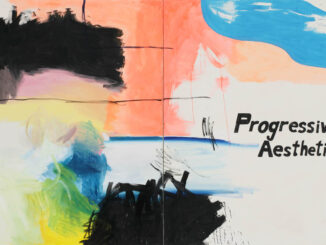
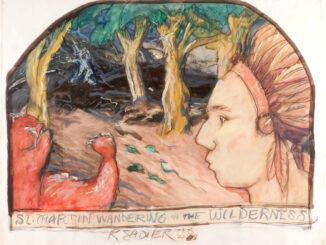
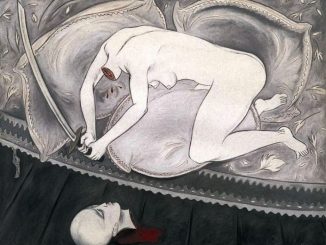
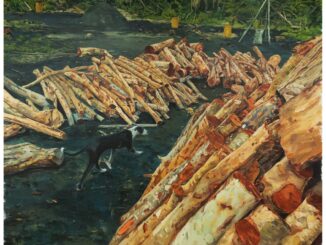
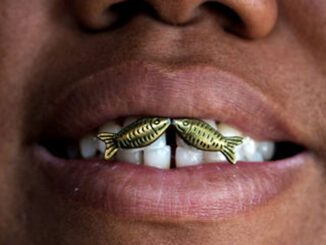
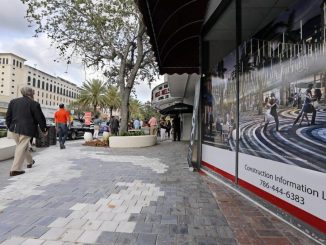
Be the first to comment